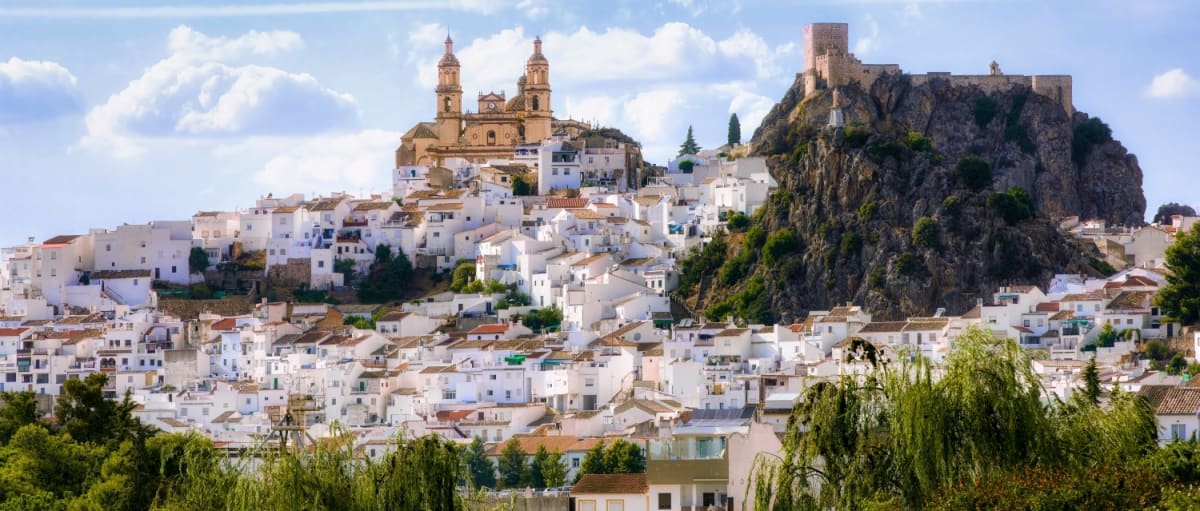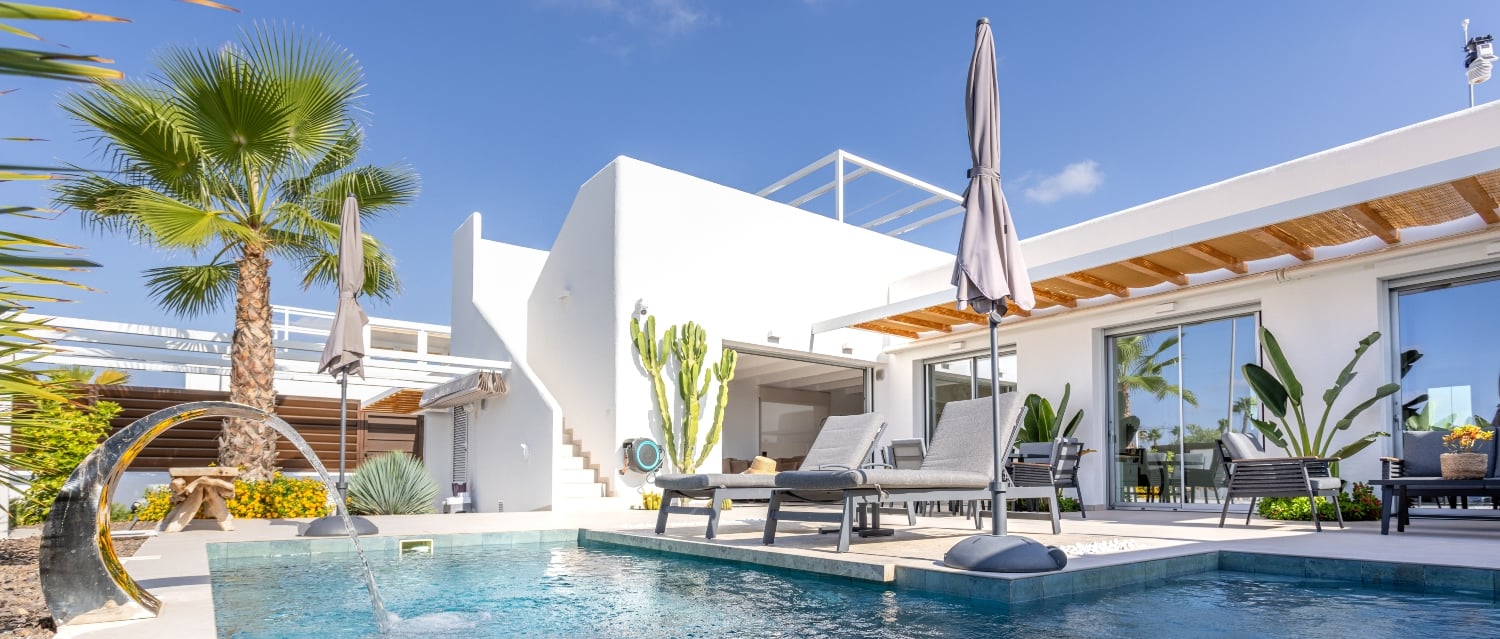From seaside cottages to countryside fincas, Spain offers a rich variety of property types to suit every lifestyle and budget. This guide explores the many options available, helping you find the perfect home – whether you’re seeking a city base, rural escape or a low-maintenance holiday retreat.
Spain is a country of contrasts, and housing is no exception. Although most people opt for apartments or villas on urbanisations, there are other possibilities for all budgets that should not be ignored when house hunting. Let’s take a deep dive into the types of properties that are available in Spain…
Search thousands of properties for sale on Your Overseas Home.
City apartments, duplexes and lofts (pisos, dúplex and áticos)
For those who enjoy city life, urban retreats in cities like Barcelona, Madrid or Valencia are ideal. These apartments and lofts come with modern amenities, proximity to world-class dining and a lively arts scene. Many urban properties feature terraces or balconies – perfect for enjoying a morning coffee or evening glass of wine while taking in the cityscape.
All these are available new, off plan and secondhand. When considering an off-plan apartment or house, you need to ensure that the constructor has all the necessary permissions, adequate finances to finish the building and will be able to provide a “Cedula de Habitabilidad”, which is required for all properties bought, sold and rented. The inconvenience is having to wait until everything is ready for living, which can be months or even years.
The same applies for a newly completed apartment, and it is worth checking that everything is in working order. Something to note about properties in Spain is that bedrooms are generally smaller than those in the UK or US. The majority of new builds will have en-suite bathrooms but again, these might be smaller than those in your home country.
Secondhand apartments might have a larger floor area than new ones but could need updating, particularly bathrooms and kitchens. Check for central heating and air conditioning as both are necessary for a comfortable life in Spain. It is really important to confirm that there is adequate outside space. It gets hot in summer, and a balcony can provide welcome fresh air. Most duplexes and lofts have larger terraces. Look for these properties in major cities and towns.
Modernist apartments
The Modernist architectural movements in Barcelona, Valencia and Palma de Mallorca reflect a unique blend of innovation and cultural identity that emerged primarily in the late 19th and early 20th centuries. This period was characterised by a departure from traditional forms, embracing organic shapes, intricate designs, and vibrant colours.
Barcelona is perhaps the most celebrated city for Modernisme, a movement heavily influenced by Antoni Gaudí. In Valencia, the modernist spirit was reflected in a range of civic and domestic buildings, incorporating both innovative techniques and local traditions. Palma de Mallorca presents a somewhat quieter yet equally enchanting expression of modernist architecture.
These historic properties are located in the city centres and are much sought after, though they come with a hefty price. They are likely to be listed buildings, meaning that you can do little to the interiors unless it is a straight renovation (with the approval of the local council’s planning department). Nevertheless, they offer high ceilings, spacious rooms, tall windows, intricate marble or tiled floors and elegant touches.

Coastal cottages
Many coastal cottages feature traditional Spanish architecture, with whitewashed walls, terracotta roofs and vibrant blue shutters that echo the hues of the Mediterranean. Often surrounded by fragrant gardens dotted with bougainvillaea and palm trees, these properties create a perfect setting for relaxation.
Inviting interiors with local craftsmanship, exposed wooden beams, wrought iron details and artisan tilework contribute to the rustic charm. Many also boast sea views from terraces or balconies.
Often, they were originally fishermen’s cottages or homes for people who worked in the fishing industry and are part of Spain’s history. Renovation can cost considerable amounts, so try to find one already upgraded but where you can still put your mark. These lovely homes aren’t particularly spacious but offer comfortable living. Some even have pools. Look for these close to fishing ports along the coast.
Pueblos blancos village houses
The pueblos blancos, or “white villages,” of Spain are a series of charming villages predominantly found in the Andalusian region. These settlements are renowned for their distinctive whitewashed houses that gleam brilliantly under the Mediterranean sun.
Typically adorned with narrow, winding cobblestone streets, the village houses exhibit a unique architectural style characterised by their flat roofs and traditional wooden doors. The whitewash serves both aesthetic and practical purposes; it reflects sunlight, helping to keep the interiors cool during the summer months, while also providing a uniformity that contributes to the overall charm of the village. Balconies often overlook bustling plazas, inviting residents to enjoy the warm evenings outdoors.
Inside, these houses typically have a simple layout, often centred around a small courtyard or patio that acts as an extension of living space. Thick walls provide insulation from heat and cold, as do the small windows, whilst rustic wooden beams and tiled floors contribute to the authentic Andalusian feel.
It’s worth noting that older buildings in white villages may require more maintenance and repairs, and finding specialised tradespeople can be challenging.
Look for these types of houses in places like Ronda and Mijas, inland from the Costa del Sol, and in Vejer de la Frontera in Cádiz.
New build villas and apartments
This type of housing is amongst the most popular for several reasons. It is generally found on the Spanish coast, particularly along the Costa Blanca, Costa Cálida and Costa del Sol. These purpose-built properties often feature communal gardens and pools, and may be located around a golf course, within a resort or inside a gated community.
They offer low maintenance and immediate occupation. The variety of homes offers something for everyone, often with two, three or four bedrooms, a private pool, security and close to a thriving town. If you consider buying one off plan, as with the new apartments in cities, you must be sure that the constructor is reputable, that there is sufficient finance to cover the costs of building and that the home will have the all-important “Cedula de Habilidad”.

Bungalows and terraced homes (adosados)
These are another popular choice as they are located in coastal urbanisations or the hills behind. Ideal for families, they offer a communal pool, so no private maintenance is required. They are also perfect as second homes, as you can lock up and go.
Some have excellent amenities too. It is worth visiting more than one urbanisation to see what’s on offer. Nothing is free, though, and community charges can be high. On the other hand, apart from repairs to your own property, you will have no maintenance to worry about.
Fincas and masias (country houses)
These are large rural properties with land, maybe farmland, various outbuildings and vineyards. Mostly they are located inland in areas such as Andalusia, Extremadura and Castilla-La Mancha. Masias are found in Catalonia and are usually made of stone.
They offer space, tranquillity away from the bustle of the coast or city and a slower pace of life but might feel a little isolated. The house is large, perhaps with a courtyard and generally with many rooms. A finca will certainly suit those who love nature and the countryside. When considering the purchase, it is vital to check the land rights: is there a public path running close to the house? Does the seller own the land? What is the situation regarding water rights? You will need a solicitor.
Quad villas
A Quad Villa is one of a cluster of four houses with a garden or terrace and a communal pool. Located in areas like Torrevieja, Ciudad Quesada and Orihuela Costa, these are sought after by people from the UK and other countries as they are affordable, need little maintenance and provide some privacy. Of course, you will have neighbours close by and less outside space than in an individual villa. Look on the Costa Blanca and Costa Cálida in Murcia.
How properties are categorised in Spain (vs Britain)
In the UK we say Victorian, Georgian, Elizabethan and Medieval.
In Spain, houses are dated by periods of time or eras:
- Pre-18th century: Moorish, Mudéjar (e.g. Toledo, Granada)
- 18th-19th century: Baroque, neoclassical (e.g. Madrid, Seville townhouses)
- Late 19th-early 20th century: Modernismo (Gaudí era)
- 1950s-70s century: post-war, simple urban builds
- 1970s-90s century: tourist boom villas and apartments
- 2000s-present century: contemporary, obra nueva
In Spain, housing types vary widely, from modern urban apartments to coastal villas to historic townhouses called “casas.” Rural areas often feature farmhouse-style homes, while cities showcase modernist and contemporary designs. Each type reflects the region’s culture, climate and architectural heritage, offering diverse living options for the potential buyer.
Check out the free Spain Buying Guide for all the information you will need to buy a home in Spain. It includes reputable lawyers, estate agents and plenty more.
You might also like:









